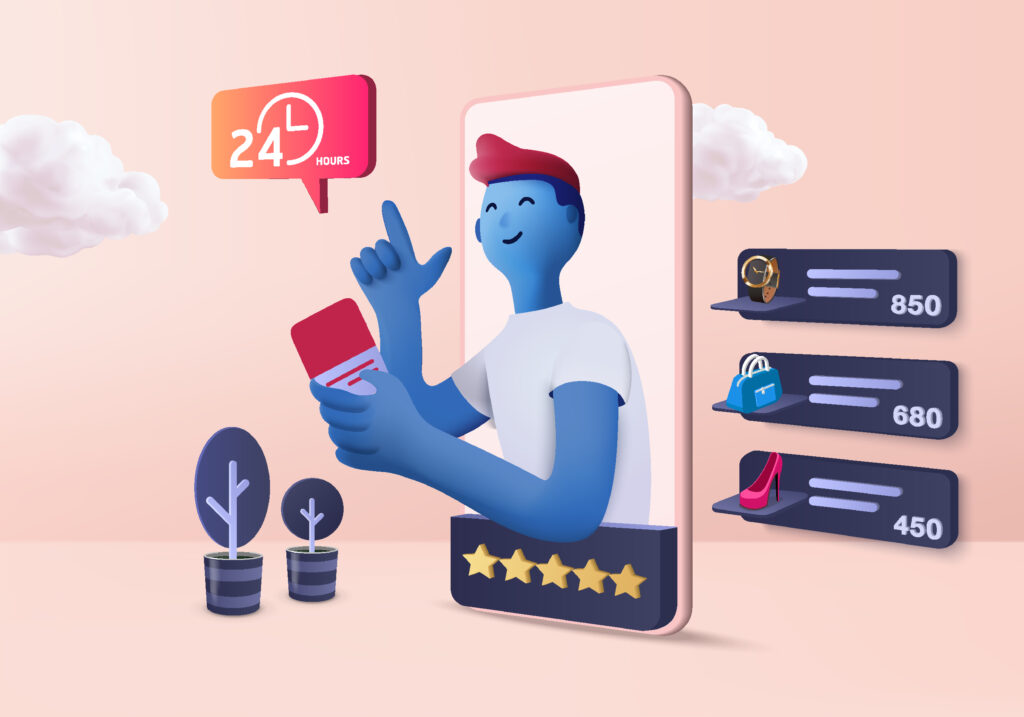LogiCommerce is trusted by global enterprise brands and wholesalers, across industries
Mobile Commerce or M-Commerce, also known as mobile commerce, has gained importance in the past few years, as both users and companies are taking advantage of the convenience of using mobile devices to make transactions.
In addition, the development of digital wallets and purchases through social networks have streamlined this process even more, making it easier, accessible and enjoyable than ever before.
Contents
We could understand mobile commerce as a strategy that was born within global eCommerce, and although both have the same objective - the purchase of products and/or services - there are key differences between them.
The first and most obvious difference is that eCommerce includes all purchases made online through a computer, while M-Commerce considers only those transactions made through mobile devices.
Another major difference is accessibility. With M-Commerce, users can access any online store at any time and from anywhere. This is something that does not happen with desktop eCommerce, since we do not usually have access to the Internet with a computer 24/7 if we are not at home.
On the other hand, while eCommerce is designed to offer a complete shopping experience across multiple devices and platforms, mobile commerce tailors the experience to be accessed via smartphones.
Moreover, the user flow in a mobile environment is quite different from that of a computer, and so are the interactions users will have due to factors such as device capacity, storage space and connection type.


Loading speed is a crucial aspect for mobile websites; even more so if you are developing an eCommerce. A customer can quickly abandon your store if the loading takes more than 3 seconds, which reduces conversions and creates a negative image of your business. For this reason, before launching a mobile commerce, tests should be performed to identify loading problems and optimize performance.
Subpages that contain little or no relevant information should be omitted, as they tend to slow down loading speeds; instead, focus on providing your users with only the essential content to create a truly engaging and intuitive browsing/shopping experience.
Touchscreen usability is an essential aspect of the success of mobile devices, as their uniqueness lies in the absence of a mouse to control them. This requires that elements such as call-to-action (CTA) buttons should be visible, clear, and placed at the bottom, so that the user has better access.
Reduce buttons in the mobile version, only use those buttons, text and images that are relevant to the user. Facilitate interaction; make the user's path really simple, less scroll and fewer steps to reach the payment.
Include eye-catching colors, implement a search function and incorporate the autocomplete option. The simpler the checkout process, the higher the conversion rate.
Mobile commerce on social networks presents an unbeatable opportunity for brands looking to reach mobile customers. Leveraging the popularity of platforms like Instagram, businesses can now have a space to advertise and even sell their products without the need to create and manage a separate app.
Moreover, partnering with influencers or hosting live shopping events can generate more publicity for your store and drive sales.
With a single click, users can go from scrolling through their feeds to directly viewing a store without leaving the social network itself. Overall, this growing trend offers exciting new opportunities for those looking to expand their presence in the marketplace.
Mobile commerce apps are often an excellent long-term investment for eCommerce companies. They are able to add a higher level of convenience and personalization, providing customers with a shopping experience tailored to their needs.
Without a doubt, they are fast becoming the preferred choice for shoppers looking for convenience and simplified payment processes. By investing in their own app, businesses not only open a window of easily navigable opportunities, but also eliminate the conversion friction that can result from designing websites that are not optimized for mobile use. Plus, they can store user preferences, track activities, and create personalized lists of product recommendations, among others.
